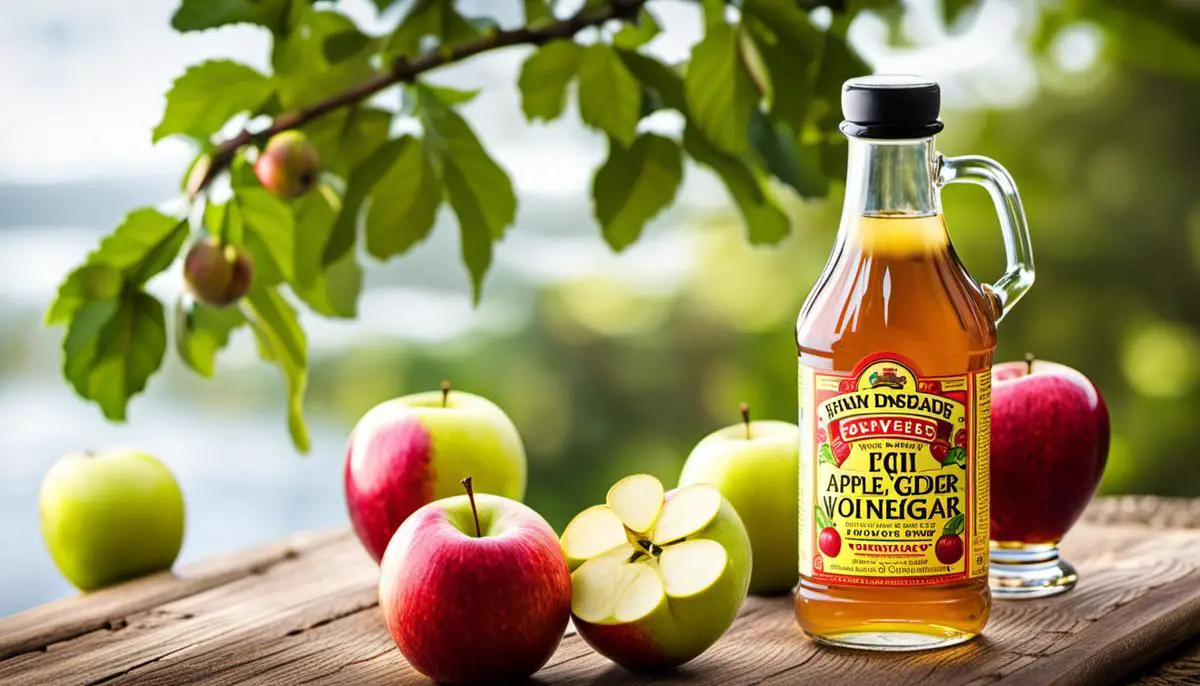Apple cider vinegar, a household staple with a diverse range of uses, has been making headlines for its potential health benefits. From its nutritional content to its numerous applications, apple cider vinegar seems to be brimming with healing properties. This essay aims to shed light on the intricacies of apple cider vinegar, emphasizing its health benefits, potential side effects, and the appropriate dosage to consume daily. We’ll dive deep into the art of preparing the apple cider vinegar tonic, focusing on various recipes, ingredients, and steps involved along with ways to improve its taste for a rejuvenating health routine. Moreover, this piece will also guide on the most effective methods to store your homemade tonic and the best times to consume it for attaining maximum health benefits.
Understanding Apple Cider Vinegar
Understanding Apple Cider Vinegar: Nutritional Content
Apple cider vinegar (ACV) is made from fermented apple juice. The fermentation process turns the sugar in the apples into alcohol, which is then converted into acetic acid, the active ingredient in vinegar. Despite being made from apples, ACV contains very few vitamins or minerals. However, it does contain a small amount of potassium. Raw, unfiltered ACV also contains a substance known as mother, which consists of strands of proteins, enzymes, and beneficial bacteria.
Health Benefits
Apple cider vinegar is believed to offer several health benefits, although more research is needed to definitively confirm these claims. Some of the purported benefits of ACV include aiding in weight loss, improving digestion, lowering blood sugar levels, and boosting heart health. It’s thought that the acetic acid in ACV can help to suppress appetite, increase metabolism, and reduce water retention, helping in weight control.
Potential Side Effects
While ACV has various health benefits, it’s also crucial to be aware of potential side effects. Consuming too much ACV can cause indigestion, throat irritation, and in some cases, tooth enamel erosion due to its acidity. It can also interfere with certain medications, so it’s advised to consult a healthcare provider before starting regularly consuming ACV.
Proper Dosage and Consumption
Ensuring you consume a safe and effective dosage of ACV is critical to enjoy its benefits and avoid negative impacts. Generally, 1-2 tablespoons mixed into water are recommended for daily consumption. It’s generally best to spread this out into two to three doses throughout the day and to drink it before meals. Always dilute ACV with water, as it’s quite strong and can cause harm if taken undiluted.
Creating an Apple Cider Vinegar Tonic
A simple and tasty way to consume ACV regularly and reap its benefits is by making a tonic. Mix 1-2 tablespoons of ACV with 8oz of warm water. Add some honey, to taste, for natural sweetness. For an additional health boost, add a pinch of ground ginger or cinnamon. Sip this easy-to-make ACV tonic in the morning or before meals for the best results.
Remember, while the health benefits of apple cider vinegar are exceptional, over-consumption can result in adverse effects. Always trust your body and consult with a medical professional if you experience any concerning symptoms after consuming ACV.

Preparation and Recipes for ACV Tonic
Basic Apple Cider Vinegar Tonic Recipe
Start off with a basic apple cider vinegar (ACV) tonic recipe. You will need ingredients like 2 tablespoons of raw, unfiltered apple cider vinegar, 1 tablespoon of raw honey or maple syrup, the juice of 1/2 a lemon, and 1 cup of water. Mix all these ingredients in a cup and your basic ACV tonic is ready to consume.
Spiced Apple Cider Vinegar Tonic
Adding flavor to your tonic can make it very appealing. To create a spiced ACV tonic, you’ll need the same ingredients as the basic recipe, with the addition of 1/2 teaspoon ground cinnamon, 1/2 teaspoon ground ginger, and a pinch of cayenne pepper. Combine all the ingredients in a glass, stir well and enjoy. This tonic can be consumed cold or warm.
Green Tea & Apple Cider Vinegar Tonic
For added health benefits, green tea can be a great addition to your ACV tonic. Brew a cup of green tea and let it cool slightly. Meanwhile, squeeze the juice of half a lemon into a glass, add two tablespoons of ACV and sweeten with honey or maple syrup. Stir in the brewed green tea and chill in the fridge for a refreshing green tea ACV tonic.
Fruity Apple Cider Vinegar Tonic
Fruit juices not only add flavor but also pack your ACV tonic with extra nutrition. To create a fruity ACV tonic, you’ll need apple cider vinegar, water, a natural sweetener, and your choice of fruit juice (apple, orange, pineapple, or cranberry). Mix the vinegar with water and sweetener before adding approximately half a cup of your chosen fruit juice.
Ginger Turmeric Apple Cider Vinegar Tonic
For an immune-boosting ACV tonic, a blend of ginger and turmeric can be highly beneficial. You’ll need freshly grated ginger and turmeric, apple cider vinegar, lemon juice, honey, and warm water. Stir these ingredients together, ensuring the tonic is smooth and homogenous before consuming.
Remember, you can always adjust the sweetness or tartness of your ACV tonic by increasing or decreasing the amount of honey or vinegar you use. Keep in mind that these mixes are also flexible – you can add or swap ingredients according to your personal preference or nutritional needs.

Storage and Usage
Storage of Homemade Apple Cider Vinegar Tonic
Once you’ve prepared your homemade apple cider vinegar tonic, it’s pivotal to store it properly to maintain its quality and potency. Store your tonic in a glass container with a lid to avoid any possible chemical interaction that could occur from a metal or plastic container. A glass mason jar is an ideal option.
Ensure that your container is clean and dry before pouring the tonic into it. Seal it tightly once filled. Do not forget to label your tonic with the date it was made.
For optimal storage, place your apple cider vinegar tonic in a cool, dark space such as a pantry or kitchen cabinet. Keep it away from direct sunlight or heat sources, as they may degrade the quality of the tonic.
Apple Cider Vinegar Tonic Shelf Life
Your homemade apple cider vinegar tonic should last for about one month when stored properly in the refrigerator. However, do check your tonic before consumption; if it develops an odd smell, color, or texture, it’s best to discard it and prepare a new batch.
Best Time to Consume Apple Cider Vinegar Tonic
Apple cider vinegar tonic can be consumed at any time of the day, although some prefer to take it first thing in the morning on an empty stomach to kickstart their digestion for the day. Others may choose to consume it before meals to help control their appetite and blood sugar levels.
Serving the tonic chilled or at room temperature is a matter of personal preference. One to two tablespoons diluted in a glass of water is a common dosage, although it’s advisable to start with a smaller amount to assess your tolerance, as apple cider vinegar is acidic.
It is also beneficial to rinse your mouth with water after consuming the tonic to protect your tooth enamel from the vinegar’s acidity. Be sure not to brush immediately after consumption as it can cause more damage to the enamel.
Keep in mind that while apple cider vinegar tonic offers several health benefits, it should not be used as a substitute for a balanced diet and regular exercise. If you have any underlying health conditions or are taking medication, consult your healthcare provider before incorporating apple cider vinegar tonic into your routine.

Overall, the journey to understanding apple cider vinegar is much like exploring a multifaceted health elixir. It not only provides us with a nutritious additive to boost daily health but also challenges us to unlock its full potential by experimenting with various recipes, tinkering with tastes, and creating a wholesome routine around its consumption. Ensuring the proper storage of this homemade tonic equally matters to maintain its quality and make the most out of its shelf life. While everything comes with its own set of instructions and health implications, apple cider vinegar proves to be a promising companion towards the journey of wellness, provided its handled with knowledge and care.
